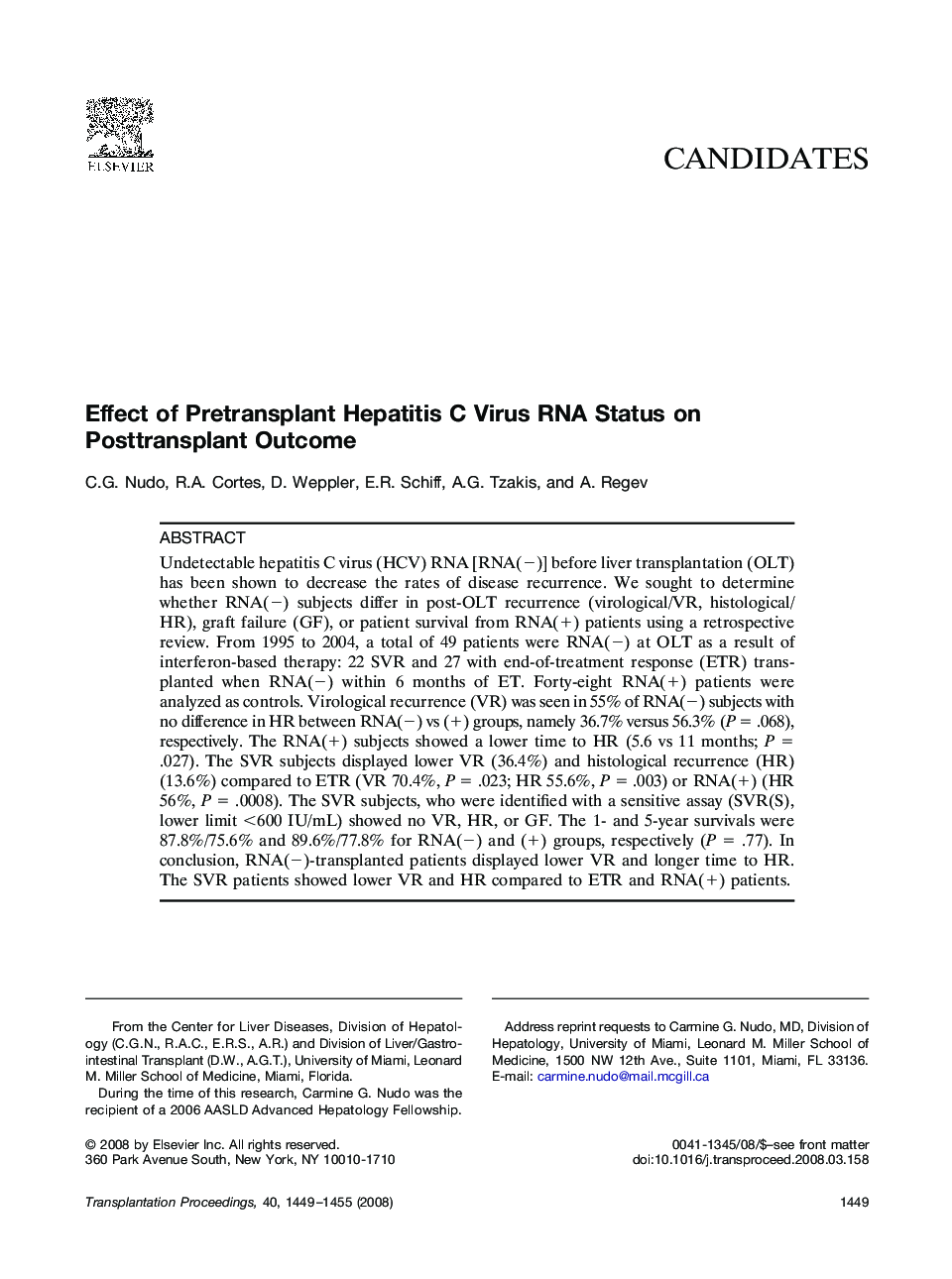| Article ID | Journal | Published Year | Pages | File Type |
|---|---|---|---|---|
| 4258238 | Transplantation Proceedings | 2008 | 7 Pages |
Undetectable hepatitis C virus (HCV) RNA [RNA(−)] before liver transplantation (OLT) has been shown to decrease the rates of disease recurrence. We sought to determine whether RNA(−) subjects differ in post-OLT recurrence (virological/VR, histological/HR), graft failure (GF), or patient survival from RNA(+) patients using a retrospective review. From 1995 to 2004, a total of 49 patients were RNA(−) at OLT as a result of interferon-based therapy: 22 SVR and 27 with end-of-treatment response (ETR) transplanted when RNA(−) within 6 months of ET. Forty-eight RNA(+) patients were analyzed as controls. Virological recurrence (VR) was seen in 55% of RNA(−) subjects with no difference in HR between RNA(−) vs (+) groups, namely 36.7% versus 56.3% (P = .068), respectively. The RNA(+) subjects showed a lower time to HR (5.6 vs 11 months; P = .027). The SVR subjects displayed lower VR (36.4%) and histological recurrence (HR) (13.6%) compared to ETR (VR 70.4%, P = .023; HR 55.6%, P = .003) or RNA(+) (HR 56%, P = .0008). The SVR subjects, who were identified with a sensitive assay (SVR(S), lower limit <600 IU/mL) showed no VR, HR, or GF. The 1- and 5-year survivals were 87.8%/75.6% and 89.6%/77.8% for RNA(−) and (+) groups, respectively (P = .77). In conclusion, RNA(−)-transplanted patients displayed lower VR and longer time to HR. The SVR patients showed lower VR and HR compared to ETR and RNA(+) patients.
